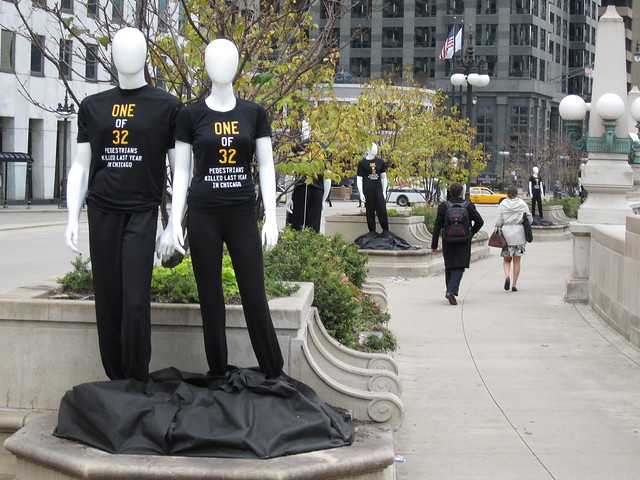[flickr]photo:6020279682[/flickr]
There might be peace in the downtown streets if Mayor Emanuel’s budget is approved by City Council. He proposes a parking garage fee to discourage driving on weekdays.
I’m reading the live transcript of Mayor Emaneul’s speech to City Council to introduce the “features” of his administration’s 2012 budget proposal. The speech was later emailed to people who signed up for the campaign mailing list. This article will be updated as I find new information.
The interesting stuff?
Congestion
“On a typical workday our central business district is jammed with people which makes it harder to do business, so I’m proposing that downtown congestion premium of $2 per day only on weekdays for parking garages and lots downtown and in River North. We would use this new revenue to invest in new and existing stations, and bus rapid transit stations, expand bike lanes, and other efforts to reduce congestion in the downtown area.”
Excellent! Now will this revenue go to a trust fund so that the revenues can only be spent for this purpose? If not, I surely hope that your budget and spending is transparent where we can see how much the City collects from this fee and how much is spent on those congestion-fighting initiatives.
More on this from the press release:
Congestion Premium for CTA: $28 million
On a typical workday, our Central Business District is jammed with vehicles, which makes it harder to do business. Our streets are crowded, roads in need of repair and pollution created by drivers is unhealthy for Chicagoans. Suburban drivers who use city services and infrastructure need to help pay the costs for these things. The congestion fee is an incentive for drivers to take public transportation or pay more to park downtown.
- Impose a “congestion premium” on all drivers parking in downtown parking garages and lots on weekdays of $2 per occasion, for a total fee of $5 on the top tier rate. ( $3 on weekends).
- Impose weekly parking fees where the cost is $60 and above, (tax increase from $15 to $25) and monthly parking where the costs is $240 and above (tax from $60 to $100).
Parking garage owners will not like this.
Heavy vehicles will cost more for drivers
“It’s estimated that 80% of the damage to Chicago’s streets is caused by a small share of heavy vehicles like trucks and SUVs. We are proposing a modest increase for heavy vehicles that do the most damage. If you drive a standard size or small car, the cost of your city sticker will stay at $75. 75% of Chicagoans will see no increase. Heavy vehicle owners will pay $135 for a city sticker, up from $120. Some of the additional revenue will go to fill an additional 160,000 potholes in 2012, nearly a 40% increase over this year.”
Upcoming hearings
The first budget hearing will begin at 9 AM on Wednesday, October 19, 2011.
The public hearing will begin at 11 AM on Wednesday, November 2, 2011.
Notes
Rahm also said, “All all these reforms will be guided by principle, by pragmatism, and by progress. Not politics.”

